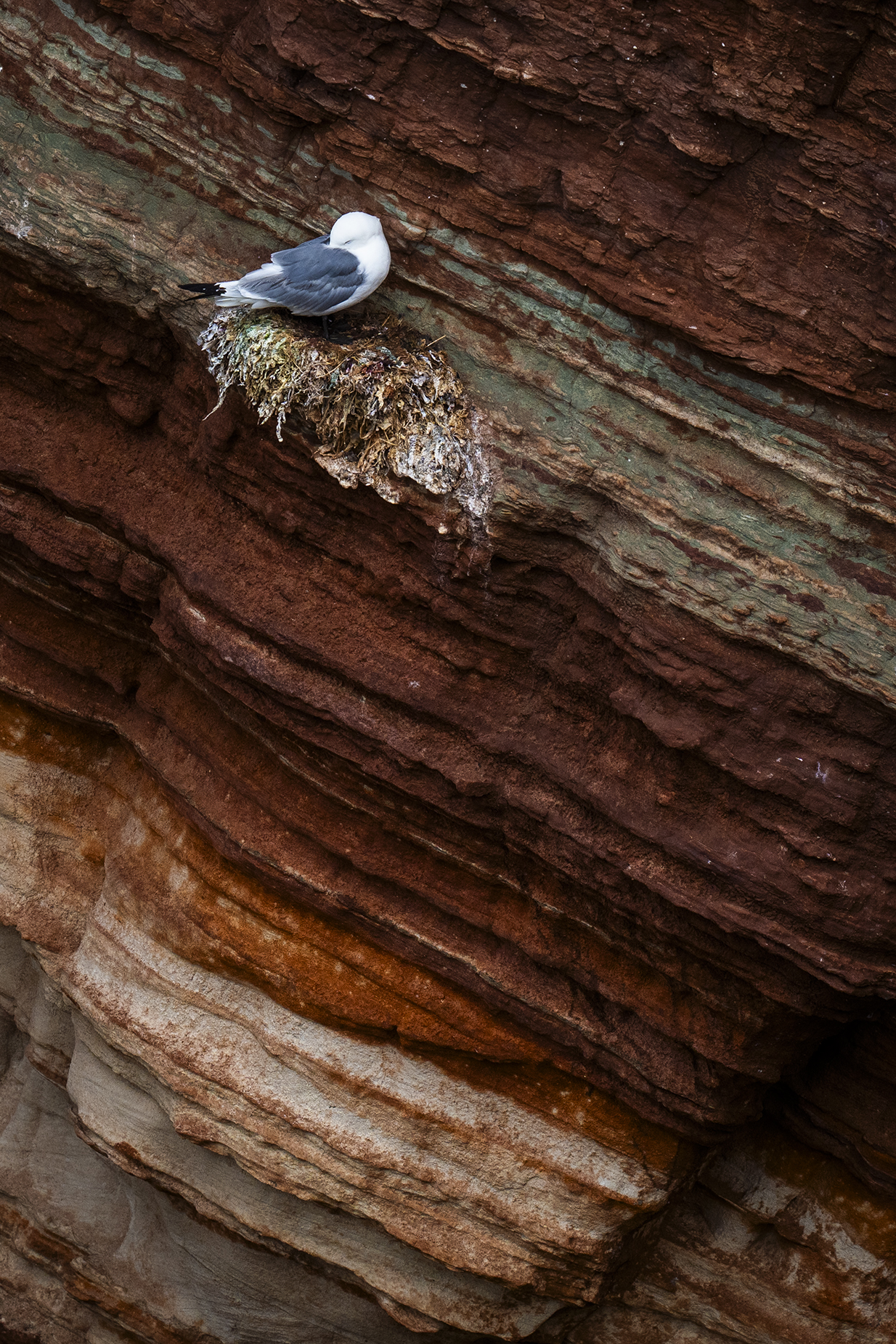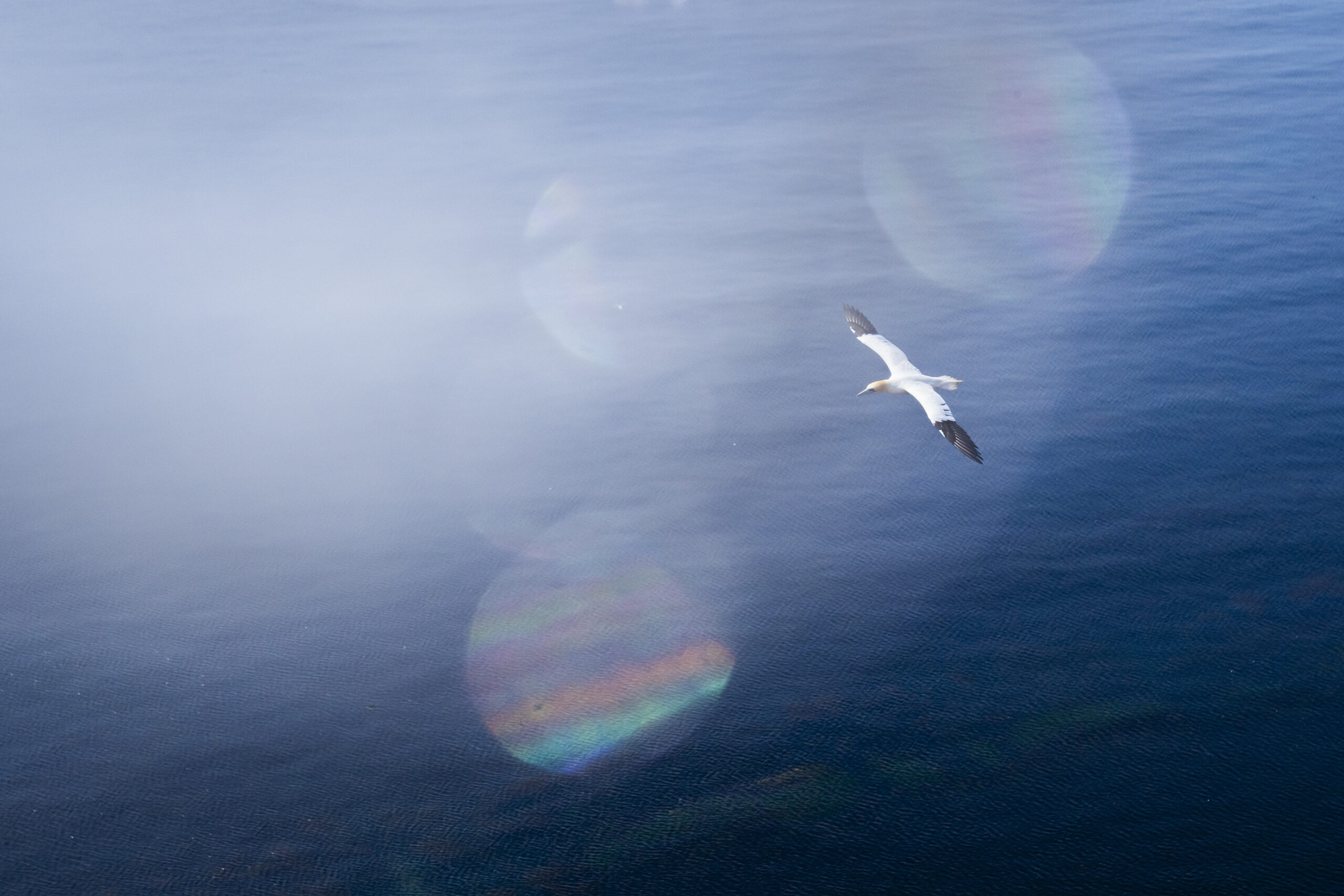Welcome to the Heligoland Review
In this short blog, I talk about my last trip to the North Sea. Enjoy reading and looking at the pictures!
If you prefer the video version, I recommend the YouTube vlog of this trip. It offers even more insights behind the scenes and the best results from the days on Heligoland.
In mid-June, I spent five days on the North Sea island of Helgoland. I took the night train to Hamburg and from there it was a four-hour ferry ride until I finally arrived. Having been there once before in the fall of 2021, this was my second visit to the 170-hectare island. The trip took place in great company, together with Luca Lorenz and the team of Zeitweise. The main aim of the trip was to capture the gannet colony in a creative way.
Gannets are impressive seabirds with a wingspan of up to two meters. Heligoland is home to the only gannet colony in Germany. They plunge elegantly into the sea at speeds of up to 100 kilometers per hour to catch fish. The gannets' breeding season runs from March to September, during which they build their nests from seaweed and algae.
Heligoland is located around 70 kilometers from the coast. Known for its striking red rocks and unique geographical location, Heligoland is a popular destination for nature lovers and those seeking relaxation. The island consists of two parts: the main island and the offshore dune. The main island impresses with its cliffs, which are up to 60 meters high, and the famous "Lange Anna", a free-standing rock that is considered Heligoland's landmark. The dune, on the other hand, is known for its fine sandy beaches and the large colony of grey seals and harbor seals that roam there. We spent the days exclusively on the main island.
Heligoland has had an eventful history, marked by occupations and bombings, particularly during the Second World War. Today, the island is a peaceful place with a special significance for nature conservation. The mild climate and location away from the mainland provide ideal breeding conditions for numerous bird species, including gannets.
In some places in the typical red cliffs, interesting structures have formed over the centuries. With a little patience, I managed to capture some gannets and kittiwakes nesting in the red cliffs. I really like the contrast between the white birds and the red rock.
The weather during our stay was very changeable. We often had several downpours on the same day and then sunshine again a short time later. Such changeable conditions make planning difficult, but are ideal from a photographic point of view. After all, the island is so small that our accommodation was always within reach and thanks to the changeable weather we were able to take photos in a wide variety of conditions. At sunset, the sun broke through the clouds a few times and created kitschy colors. I spent these moments at the gannet colony.
As already mentioned, we were also regularly surprised by rainfall. Unfortunately, we never really managed to discover many motifs. One afternoon, however, we spent a few minutes in the pouring rain with some grey seals and eider ducks, which didn't seem to mind the heavy rain.
We stayed at the gannet colony until late in the evening. During our stay, the moon rose directly behind the colony over the North Sea. The moon was reflected in the sea and therefore offered some exciting photo opportunities. In addition to this already beautiful atmosphere, we tried our hand at some interesting effects. A light source, some water droplets on the lens and various kitchen utensils in front of the lens created abstract effects.






























